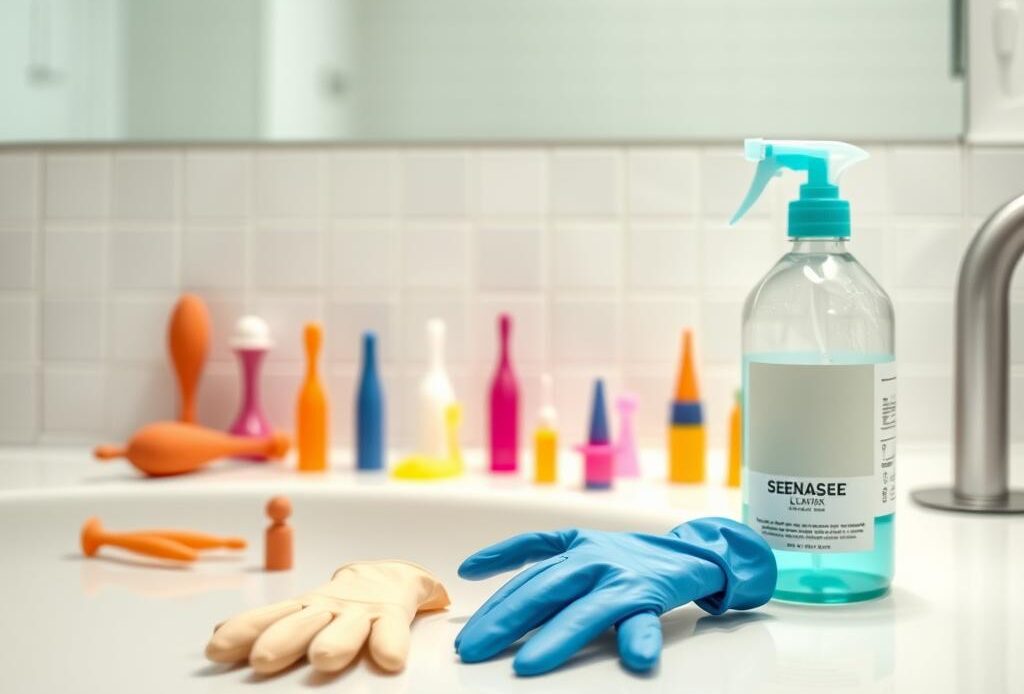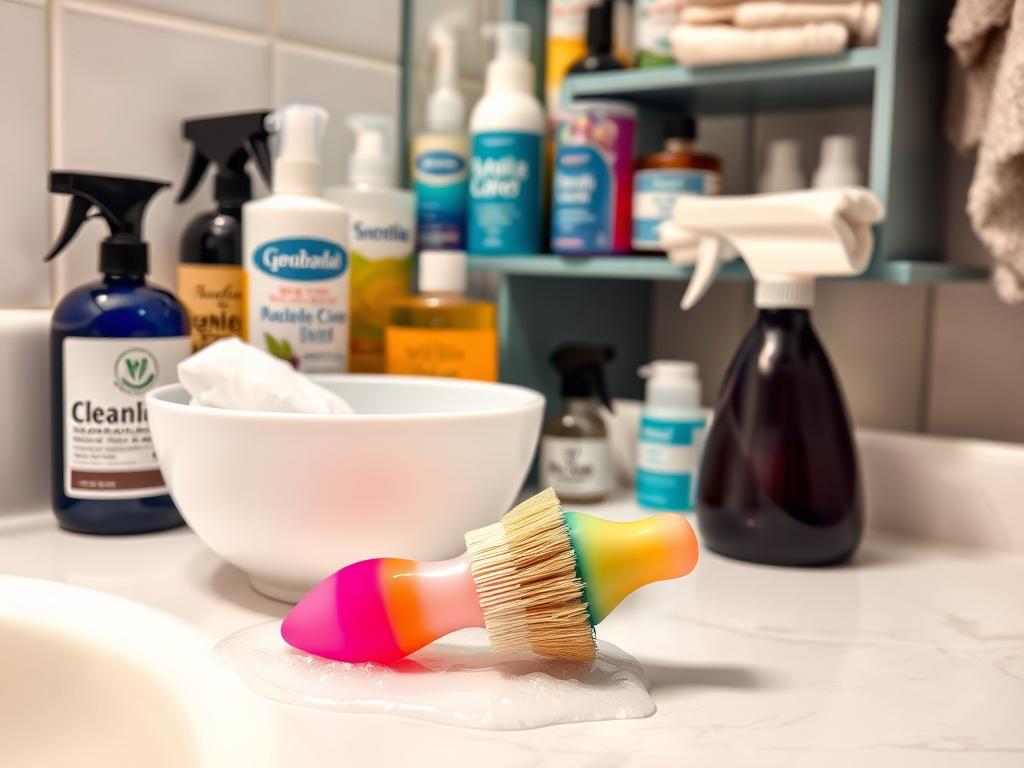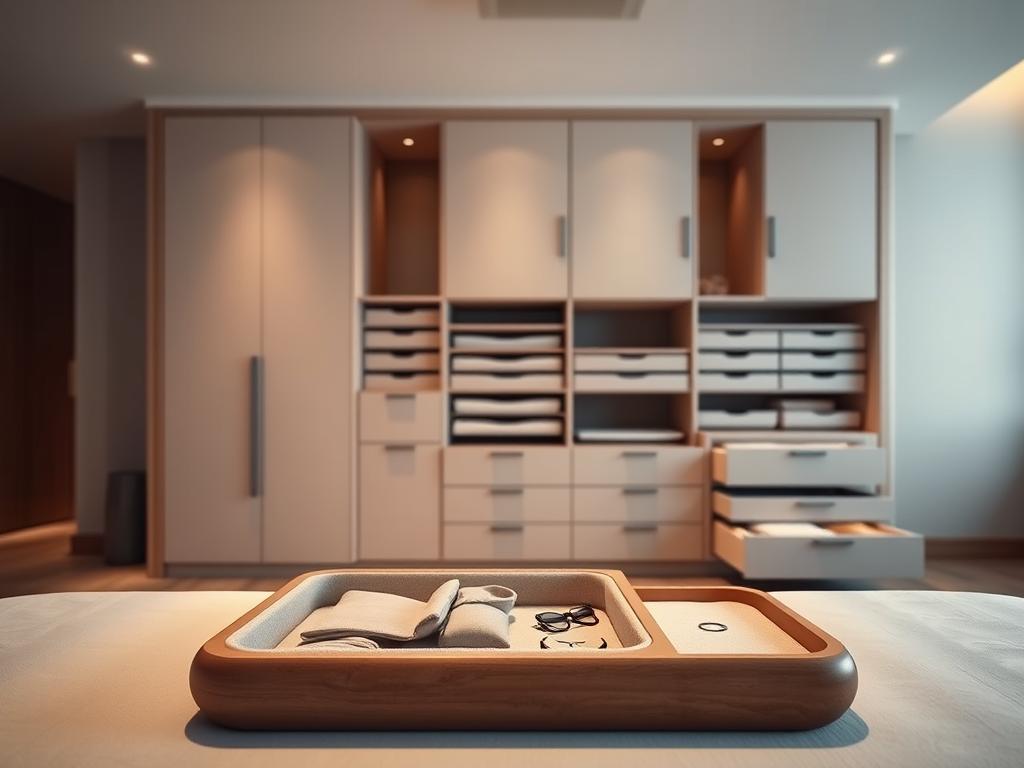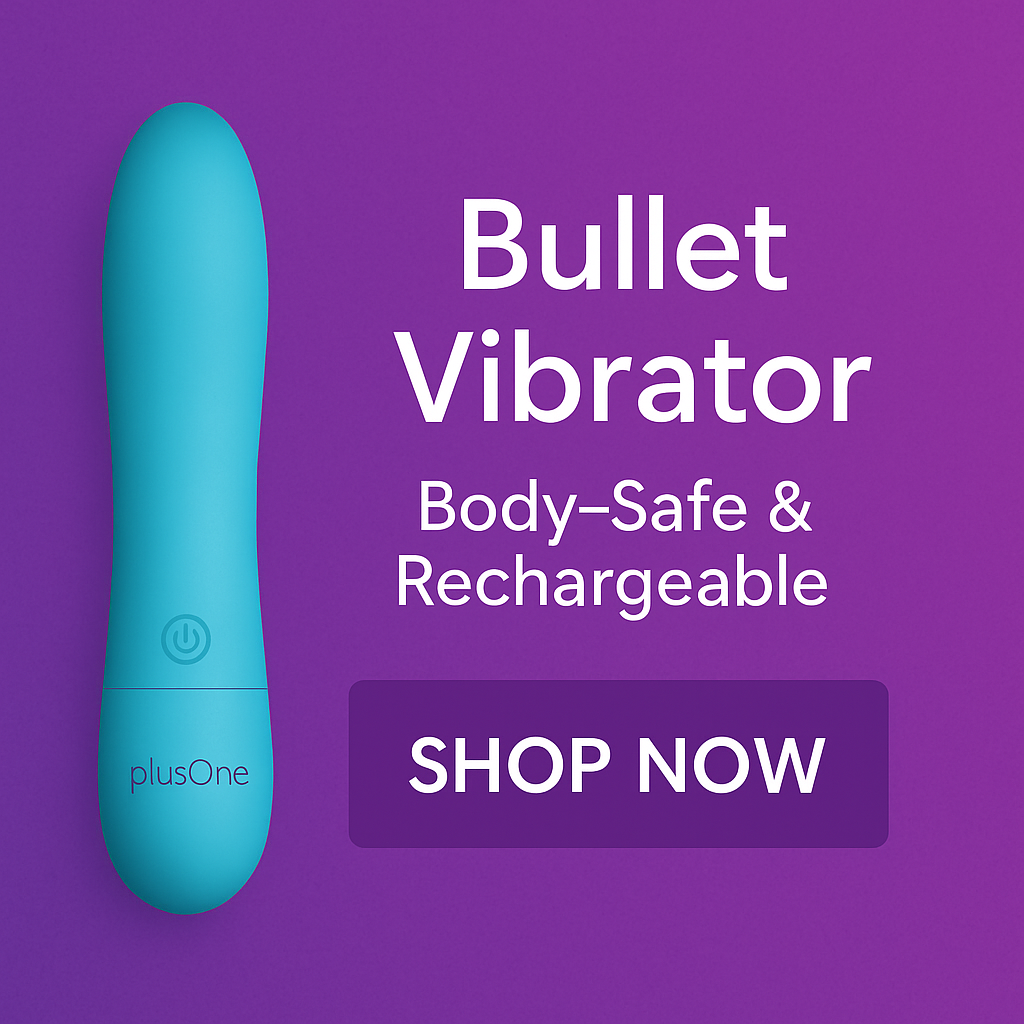
Maintaining hygiene with personal pleasure items isn’t just about freshness—it’s a health priority. Bacteria can linger on surfaces, leading to unwanted risks. Whether you’re new to these products or a seasoned user, understanding care routines ensures they stay in top shape for years.
Most items are water-friendly, but always verify their safety ratings first. As expert Bianca Alba highlights, materials like silicone or glass might handle boiling, while others need gentler methods. One wrong step could damage your favorite product—or worse, compromise your well-being.
Shared or solo use? Proper care matters either way. Regular maintenance protects both your body and investment. For detailed tips on material-specific routines, explore our essential guide for maintaining hygiene.
Key Takeaways
- Regular care prevents bacterial growth and extends product life.
- Always check water safety guidelines for your specific item.
- Material type (silicone, glass, etc.) determines cleaning methods.
- Shared items require stricter sanitization practices.
- Expert advice ensures safe and effective maintenance routines.
Understanding the Importance of Cleaning Sex Toys
Your wellness routine deserves attention beyond the basics—especially for items that come into close contact with your body. Research shows that 85% of users overlook thorough sanitization, risking exposure to harmful microbes. A quick rinse won’t cut it when tackling stubborn residues or invisible threats.
Stopping Germs Before They Spread
Warm water and mild soap are your first line of defense. These break down oils and residues where pathogens thrive. For non-waterproof items, specialized cleaners offer deeper disinfection without damaging surfaces.
Neglect can lead to recurring issues like urinary tract discomfort or skin irritation. A 2022 study found that regular washing reduces bacterial presence by up to 99% on nonporous materials. Always check manufacturer guidelines—some products require air-drying to preserve their texture.
Preserving Performance Over Time
Proper care isn’t just about safety—it’s about value. Silicone and glass retain their smoothness longer when cleaned correctly, while porous materials need extra attention to avoid degradation.
| Method | Best For | Effectiveness |
|---|---|---|
| Soap + Warm Water | Daily Use | Removes 90% surface debris |
| Specialized Cleaners | Non-Waterproof Items | Kills 99% bacteria |
| Disinfection Wipes | On-the-Go Care | Quick sanitization |
One pro tip: Avoid harsh scrubs. Soft cloths prevent scratches that harbor germs. Pair gentle cleaning with prompt drying to maintain both hygiene and product integrity.
How Often Clean Sex Toys: A Cleaning Frequency Guide
Establishing a consistent routine keeps your intimate items safe and functional. Whether you’re the only person enjoying them or sharing with others, timing matters. Let’s break down practical approaches for different scenarios.
Cleaning After Solo Use
Sanitizing after every use is non-negotiable. A quick rinse takes 20 seconds, but thorough washing with mild soap requires 2-3 minutes. Focus on crevices where residues hide—this prevents microbial growth over time.
For non-motorized items, a step-by-step guide simplifies the process. Always air-dry completely before storage to avoid moisture buildup.
Cleaning When Sharing with Partners
Shared items demand extra care. While condoms reduce contact with bodily fluids, they don’t replace proper washing. Follow these steps:
- Disinfect surfaces before and after partner play
- Use antibacterial sprays for non-waterproof materials
- Allow 5-7 minutes for deeper sanitization
| Situation | Time Needed | Key Steps |
|---|---|---|
| Solo | 2-3 minutes | Rinse, soap scrub, air-dry |
| Shared | 5-7 minutes | Disinfect, inspect, dry thoroughly |
PRODUCT 101 research confirms: immediate care post-use slashes bacterial risks by 94%. Those few minutes protect both people and preserve your investment.
Choosing the Right Cleaning Methods
Not all care routines fit every item—material and design dictate your approach. We’ll explore practical solutions that balance convenience with thoroughness, whether you’re handling simple designs or intricate models.

Soap and Warm Water vs. Specialized Toy Cleaners
Basic soap and water work wonders for many materials like silicone or glass. This method removes surface debris efficiently. But as Bianca Alba notes, “Textured surfaces or motorized products often need targeted solutions to reach hidden spots.”
Specialized toy cleaners offer pH-balanced formulas that eliminate residues without harsh chemicals. Brands like AfterGlow provide wipes for quick, rinse-free maintenance—ideal for travel or shared spaces.
When to Use Disinfection Techniques
Non-waterproof items demand extra caution. Disinfection sprays or alcohol wipes (70% isopropyl) become essential here. Always test a small area first to avoid damaging sensitive materials.
| Method | Best For | Maintenance Level |
|---|---|---|
| Mild Soap | Smooth surfaces | Daily care |
| Toy Cleaners | Textured designs | Deep cleaning |
| Disinfection Wipes | Non-waterproof items | Emergency use |
One golden rule: Match your product to its materials. Porous options like TPE require alcohol-free solutions, while stainless steel handles stronger agents. Check manufacturer guidelines—they know their products best!
Cleaning Techniques for Different Toy Materials
Different materials demand tailored approaches for optimal hygiene. Smooth surfaces like silicone, glass, and stainless steel resist bacterial penetration, while porous options need extra attention. Let’s explore care strategies for both categories.
Nonporous Materials: Simple Care for Lasting Quality
Nonporous surfaces won’t absorb fluids, making them easier to maintain. Warm water and mild antibacterial soap remove 98% of residues from silicone or glass items. For stainless steel, a soft cloth prevents scratches while wiping away debris.
Pro tip: Boiling water sanitizes heat-safe materials like medical-grade silicone. Always check manufacturer guidelines—some finishes degrade with harsh methods.
Porous Materials: Extra Steps for Safety
Porous toys trap moisture and microbes in their textured surfaces. These items require:
- Alcohol-free cleaners to avoid degrading the material
- Condom use during shared play
- Immediate washing after each session
| Material Type | Cleaning Solution | Drying Time |
|---|---|---|
| Silicone/Glass | Mild soap + water | 15-30 minutes |
| Porous Toys | Specialized cleaner | 1-2 hours |
Remember: Proper techniques extend your item’s lifespan. When in doubt, always prioritize the manufacturer’s instructions over generic advice. A little attention today prevents issues tomorrow!
Step-by-Step Cleaning Process for Your Sex Toys
Treating your pleasure products to a thorough wash isn’t just about hygiene—it’s a ritual that safeguards both health and durability. Let’s walk through a foolproof method trusted by experts and enthusiasts alike.
Pre-Cleaning Preparations and Battery Safety
Start by powering down and removing batteries from motorized items. As Bianca Alba advises, “Water and electronics don’t mix—always disconnect before washing.” Check manufacturer guidelines to confirm if your item tolerates boiling water or requires gentler methods.
- Designate a soft-bristled toothbrush for textured surfaces
- Use pH-balanced cleaner for sensitive materials
- Keep a lint-free towel nearby for drying
Proper Rinsing, Scrubbing, and Drying Procedures
For non-motorized items rated safe for heat, submerge in boiling water for 3-5 minutes to sanitize. Others need a 20-second rinse under warm water followed by gentle scrubbing. Focus on grooves where residues hide—your dedicated toothbrush works wonders here.
| Step | Boiling-Safe Items | Non-Boiling Items |
|---|---|---|
| Rinse | Optional | 20 seconds warm water |
| Sanitize | 5-min boil | Antibacterial cleaner |
| Dry | Air-dry on towel | Pat with microfiber cloth |
Mashable’s research confirms: Air-drying on a fresh towel prevents lint transfer better than paper products. Store your clean toy only when completely dry—moisture invites bacterial parties you’ll want to avoid.
Tips for Effective Sex Toy Storage
Protecting your investment goes beyond regular care—storage plays a crucial role in preserving quality. Research shows 63% of users report material degradation due to improper handling post-cleaning. A thoughtful approach keeps your items fresh and functional for years.

Air-Drying and Avoiding Dust Recontamination
Always let items dry completely before storing. Moisture trapped in cases creates breeding grounds for mold. Lay products on a clean towel for 30-60 minutes, flipping halfway for even airflow.
Mashable’s 2023 study found dust particles reintroduce bacteria 78% faster on improperly dried surfaces. Use lint-free cloths to wipe crevices, especially on textured designs.
Storing in Clean, Cool, and Dark Places
Designated cases prevent dust buildup and accidental damage. PRODUCT 101 recommends breathable cotton pouches over plastic bags—they allow airflow while shielding from light exposure.
| Storage Option | Best For | Material Protection |
|---|---|---|
| Cotton Pouch | Silicone/Glass | Prevents scratches |
| Lockable Case | Shared Items | Privacy + hygiene |
| Silk-Lined Box | Delicate Surfaces | Reduces friction |
Keep your storage area away from heat sources like radiators. Temperature fluctuations weaken materials over time. Wash hands before handling—natural oils transfer easily to porous surfaces.
Pro tip: Label cases to avoid mix-ups. Separate charging cables from items to prevent moisture damage. A little organization today saves frustration tomorrow!
Addressing Common Cleaning Challenges
Even the most diligent care routines can hit snags. Stubborn residues or unexpected odors demand targeted solutions to keep your items hygienic and functional. Let’s tackle these hurdles head-on.
Removing Ejaculate and Lubricant Residues
Sticky residues cling to surfaces if not addressed quickly. PRODUCT 101 data shows dried substances take 3x longer to remove than fresh ones. Act fast—rinse items within 10 minutes of use.
Use a soft, dedicated cloth to wipe textured areas. For silicone or glass, warm water with mild soap breaks down oils effectively. Avoid abrasive sponges—they scratch surfaces and trap future debris.
Managing Lingering Odors and Stains
Persistent smells often stem from porous materials absorbing bodily fluids. Bianca Alba recommends “a baking soda paste for gentle deodorizing” on non-motorized items. For waterproof toys, a 5-minute soak in white vinegar neutralizes odors without harsh chemicals.
| Problem | Solution | Time Required |
|---|---|---|
| Dried Lubricant | Warm water soak + soft brush | 10 minutes |
| Odors in Porous Toys | Baking soda paste application | 15 minutes |
| Surface Stains | Hydrogen peroxide wipe (non-porous only) | 2 minutes |
Always make sure storage areas are dry before putting items away. Consistent routines help you spot issues early—like discoloration signaling material breakdown. Your efforts today prevent bigger headaches tomorrow!
Maintaining Your Clean Sex Toys for Long-Term Use
Preserving the quality of intimate products demands ongoing vigilance and smart habits. Beyond daily care, proactive strategies ensure your items stay safe and perform like new. Let’s explore essential practices that go beyond the basics.
Regular Inspection and Material-Specific Care
We recommend monthly checkups for all items. Look for cracks, discoloration, or unusual odors—these signal it’s time for replacement. Silicone vibrators often show wear near seams, while glass products might develop microfractures.
Shared items need extra precautions. Using a condom during partner play adds a protective layer, especially for porous materials. Always sanitize before switching between users, even with barrier methods.
Many toys come with care guides tailored to their design. Follow these closely—boiling instructions for medical-grade silicone differ from those for thermoplastic elastomers. Mashable’s 2023 study found users who follow manuals report 67% longer product lifespans.
| Material | Inspection Focus | Action Needed If… |
|---|---|---|
| Silicone | Surface texture | Sticky or cloudy appearance |
| Glass | Edges/joints | Chipping or rough spots |
| TPE | Odor retention | Persistent smells post-wash |
Schedule quarterly deep cleaning sessions. For motorized vibrators, use alcohol wipes on external surfaces—never submerge unless waterproof-rated. Nonporous items benefit from 10-minute soaks in toy-safe disinfectant solutions.
Remember: Consistency is key. A well-maintained collection protects your health and maximizes enjoyment. When toys come with specific guidelines, treat them as non-negotiable rules—not suggestions!
Conclusion
Caring for your intimate accessories isn’t just about upkeep—it’s about respecting your well-being. Drawing from Bianca Alba’s expertise and PRODUCT 101 research, we’ve outlined why consistent care matters. Proper routines prevent unwanted risks while preserving your investment.
Always prioritize manufacturer guidelines. Trusted cleaners safeguard both your body and premium materials like medical-grade steel. Shared items demand extra attention to avoid cross-contamination or infection risks.
Store items in breathable pouches after thorough drying. Regular inspections catch wear before issues escalate. Simple habits—like post-use washing and gentle scrubbing—keep even textured surfaces pristine.
We encourage making maintenance part of your self-care ritual. Quality methods ensure every experience remains safe and satisfying. Thank you for trusting our guide—explore our library for more tips on maximizing pleasure responsibly!
FAQ
What’s the recommended cleaning schedule for intimate devices?
We suggest washing items immediately after every use. This prevents residue buildup and keeps them hygienic for next time.
Why is regular maintenance crucial for pleasure products?
Consistent care stops harmful germs from thriving and preserves materials like silicone or stainless steel, ensuring they last longer.
Does sharing devices with a partner require more frequent cleaning?
Yes! Always sanitize shared items between users to avoid cross-contamination. Consider using condoms for extra protection.
Can I use regular hand soap for washing?
Mild soap and warm water work for most nonporous materials. For delicate products, opt for pH-balanced cleaners like Lovehoney Fresh or Wicked Simply Clean.
How do I care for silicone versus porous materials?
Silicone, glass, and steel can handle boiling or toy cleaners. Porous items (TPE, rubber) need gentle soap and thorough drying to avoid bacterial growth.
What’s the best way to dry devices after washing?
Pat them with a lint-free towel and air-dry completely. Avoid heat sources—let them rest in a cool, ventilated spot.
How should I store my items to keep them clean?
Keep them in breathable pouches (like Liberator Storage Bags) away from sunlight. Separate materials to prevent reactions.
How do I remove stubborn lube or bodily fluid residues?
Soak nonporous products in warm water with a drop of dish soap. Scrub gently with a soft brush, then rinse thoroughly.
Can lingering odors be eliminated from porous toys?
Unfortunately, porous materials trap smells over time. Regular cleaning helps, but replacing them every 6–12 months is wise.
How can I ensure my products last longer?
Inspect them monthly for cracks or discoloration. Follow brand guidelines—for example, rechargeable vibrators need battery care to avoid damage.

